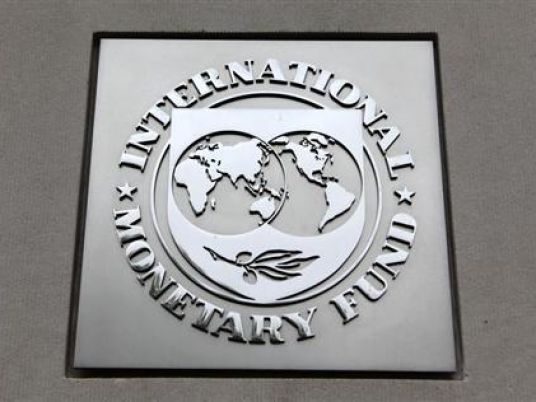
Egypt is on track to receive the second tranche of a US$12 billion three-year loan from the International Monetary Fund pending a visit in the end of February to review progress on its economic reform programme, the Fund said on Wednesday.
The IMF originally approved the loan, intended to jumpstart an economy battered by years of turmoil that has driven away investors and tourists, key sources of hard currency, in November when it released the first US$2.75 billion instalment.
"Although [economic indicators] for December have not been published yet, early indications are that the benchmarks for the next tranche of the loan are likely to be met," IMF Mission Chief for Egypt Chris Jarvis said at a news conference.
The deal came into effect days after the central bank took the dramatic step of letting the pound float freely in currency markets. But the details of the agreement and the government's reform timetable were not immediately released in full, prompting questions from economists about how the markets were expected to track the government's progress.
Egypt will scrap its remaining caps on transfers and deposits of foreign currency by the end of June and overhaul its oil sector, the IMF staff report from November, released on Wednesday, showed.
Some of the toughest measures, including floating the currency and introducing a value-added tax, have already been implemented.
Egypt's pound has more than halved in value against the dollar since the float, trading at almost LE19 to the dollar on Wednesday.
"The exchange rate is more depreciated than we expected given the fundamentals," Jarvis said.
The programme sets out a raft of other measures including an end to energy subsidies, reforms to public enterprises and an overhaul of monetary policy that Egypt will make over the next three years to restore economic stability and long-term growth.
"The restoration of macroeconomic stability will allow Egypt to put the economic turbulence of the post-revolution period behind it," the IMF said in its report.
A worsening dollar shortage crippled imports, while the government faced a ballooning public debt, partly due to huge subsidy costs and poor tax collection.
According to the 72-page report, the government has pledged to maintain a flexible exchange rate, intervening only occasionally to prevent excessive short-term volatility.
It has also promised to scrap by June a US$50,000 cap on non-priority imports and a US$100,000 cap on individuals' transfers abroad while rebuilding its dwindling foreign reserves.
Instead of managing the exchange rate, the central bank will target prices, with inflation forecast to reach 19 percent in the current fiscal year due to the currency flotation, subsidy cuts and the introduction of VAT.
The plan envisages inflation falling to 7 percent by the end of the programme, with the central bank tightening monetary policy using interest rates and other tools.
Jarvis said the Fund expects inflation to begin dropping sharply by the second quarter of this year.
But planned austerity measures carry enormous political risks for President Abdel Fattah al-Sisi, who promised to restore stability and prosperity when he seized power in mid-2013.
While no protests have materialised, inflation has soared to over 20 percent and ordinary people say they are finding it harder to make ends meet.
In its report, the IMF acknowledged the risk that the government could cave in to political pressure to slow down painful changes.
"The risks to the programme mainly arise from the difficulties inherent in implementing a strong and wide-ranging reform programme," the IMF said.
"Failure to tighten monetary policy sufficiently could lead to exchange rate and inflationary pressures and loss of reserves. Structural reforms are vulnerable to opposition by vested interests. There is a risk that regional conflicts could intensify and domestic security conditions deteriorate."
OIL SECTOR REFORMS
The deal also commits Egypt to longer-term structural reforms and new insolvency, industrial licensing and other laws aimed at cutting government bureaucracy and encouraging private-sector investment.
Among the boldest moves is a plan to reform the oil sector in general and state oil firm EGPC in particular. Egypt will develop that plan by the end of March.
EGPC will also repay nearly US$3.6 billion of arrears to international oil firms and seek not to accumulate new arrears.
On the fiscal front, the government has promised to eliminate gasoline and diesel subsidies in 2018/19 and will publish quarterly reports on inflation and monetary policy as well as financial stability to give investors more visibility.
"We believe that the policies described … are adequate to achieve the objectives of our programme over the medium term," reads the government's letter of intent published with the IMF staff report.
The government's measures are expected to reduce its debt from about 95 percent of GDP in 2015/16 to about 86 percent by 2018/19 and 78 percent in 2020/21, the report suggests.
GDP growth is expected to remain stable at about 4 percent this fiscal year as high interest rates, government austerity and inflation dampen business. Growth is seen rising to 5-6 percent in the medium term, the report says.
The IMF's US$12 billion loan is part of a wider financing package for Egypt, which is estimated to need US$35 billion over three years. The IMF said the programme was fully financed for the first year but additional financing was needed for the next two years.
It confirmed that China, the United Arab Emirates, Germany, Britain, France and Japan had all contributed in various forms.
Saudi Arabia, once among Egypt's closest backers, was not named, however. Differences over regional politics have soured relations between the two countries in recent months, culminating in the suspension of Saudi oil aid to Egypt last year.




